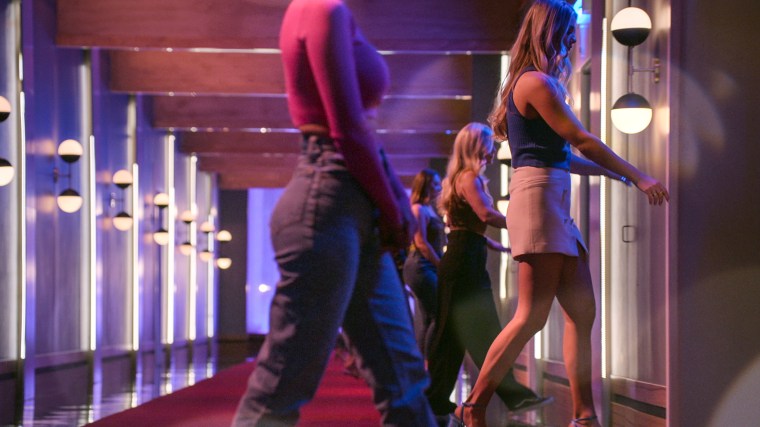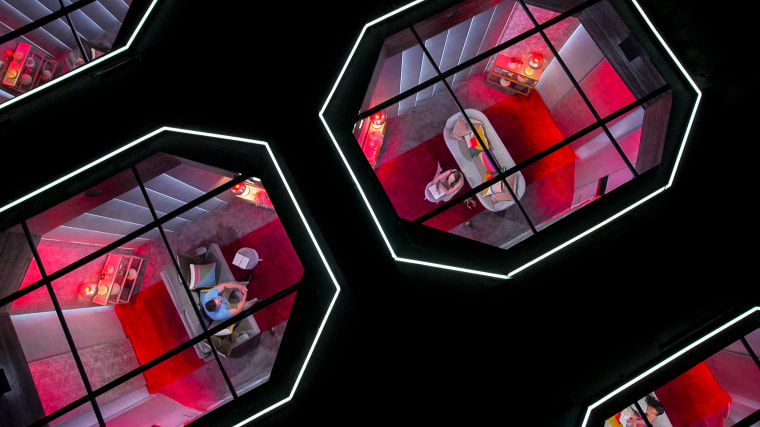Buckle your seat belts: “Love Is Blind” is back, baby. The sixth season of the dating reality show dropped its first six episodes on Valentine’s Day, fittingly, with three new episodes Wednesday — and it’s currently the most-watched show on Netflix. The cinematic equivalent of a drunken, late-night McDonald’s binge, the show is devourable, but can leave you feeling slightly queasy and in need of a juice cleanse. And while it’s easy to binge, the show reinforces a worldview that hurts minority and oppressed populations, especially women, queer people and Black people.
While it’s easy to binge, the show reinforces a worldview that hurts minority and oppressed populations, especially women, queer people and Black people.
In case you don’t know, in “Love Is Blind,” 15 men and 15 women are separated by gender and date each other through a wall; all they can hear is one another’s voice in “the pods.” In order to meet, they must leave the pods engaged to one another. After meeting, they are whisked away to a weeklong beachside resort, where they get to know one another physically for the first time. And then they live together for four weeks in staged apartments before meeting at the altar and deciding if they want to get married. What could possibly go wrong?
The show, which debuted in the U.S. in 2020, has become a global phenomenon with adaptations based in Brazil, Japan and Sweden, and at least four more versions planned for Argentina, Germany, the U.K. and the UAE (I regret to inform you the last one is titled “Love Is Blind, Habibi”). The show is a masterclass in, and an agent of reproducing some of society’s most oppressive ideologies and the concomitant power dynamics embedded in certain types of social relations.
Among other things, the show’s premise and the types of contestants selected to participate in the experience reproduce harmful expressions of gender and sexuality. It explicitly promotes regressive forms of femininity, masculinity and heterosexuality, which, lest we forget, hurts everyone, including men. (This is something I’ve written about before.) The relational dynamics and expressions of gender (think: “Guys and Dolls”) at times feel like they could be lifted out of a 1950s book on heterosexual courtship and the role of men and women.

Critiques abound of the role reality dating shows play in reproducing such tropes. One research paper on the show “Love Island,” for example, notes that “by presenting female contestants as overly emotional and irrational, outdated stereotypes surrounding emotionality and hysteria are reproduced within [the show].” It goes on to identify sexual double standards between male and female contestants, all which play out on steroids in “Love Is Blind.” And these shows naturally have a symbiotic relationship with the real world. A study among college women found that “heavier viewing of reality programming predicted greater support for the heterosexual script,” or traditional, gendered courtship roles. Disturbingly, the authors noted that “these studies contribute to our understanding of unique media contributions to endorsement of the heterosexual script and illuminate one process by which women may come to normalize sexual mistreatment.”
Additionally, “Love Is Blind’s” premise and casting process implicitly erases and devalues certain populations, such as people who are queer, fat, and/or have disabilities, by privileging people who are straight, thin and don’t have disabilities. It normalizes not just antiquated expressions of heterosexuality and gender, but certain body types, too. Aside from the fact that most contestants are fitness fanatics with thin bodies, some explicitly describe their physical “deal breakers.” One contestant, Clay, for example, notes during one of his dates that he needs a woman who is “petite” and then later tells his fiancée, AD, that he’ll forcefully tell her to go to the gym if she starts to put on weight (even if she’s pregnant). “I wouldn’t even let you get out of shape,” he said. “I’d be like, AD, get in that mother----ing gym.”
Disappointingly, this season also reproduces gendered race relations, especially between the white contestants and AD, the only Black woman to get engaged and make it to the second phase of the show. AD is ogled by one white male contestant, Jimmy, who makes a comment about AD’s physique to his own fiancée, Chelsea. The physical affection Jimmy directs at AD seems to make AD uncomfortable. Jimmy later attempts to make what vaguely sounds like an apology, but he is unable to name what actually happened. “I felt bad about that, but I know you know what I’m talking about,” he says to AD. “But that helped Chelsea and I,” he adds, referring to the conflict the incident produced between Chelsea and him, which the two ultimately resolved. In so doing, he puts AD’s objectification and dehumanization in service of him and his relationship. Using humor to identify the absurdity of his pseudo-apology, AD responds, “I’m glad that you talking about my ass helped you and Chelsea get to the next level.”
One contestant, Clay, notes that he needs a woman who is “petite” and later tells his fiancée that he’ll forcefully tell her to go to the gym if she starts to put on weight (even if she’s pregnant).
AD also becomes the subject of a so-called joke (or, more accurately, sexually violent language) when another white male contestant tells AD his white fiancée told him to slap AD’s breast.
While the series might make for a compelling dumpster fire of relational drama and unresolved trauma (which is hard to turn away from), it’s worth interrogating what social relations and ideologies “Love Is Blind” reproduces — and how we might be internalizing these. While it’s all fun and games on the surface, it is incumbent on us to ask what the show normalizes for its viewers. From the hypersexualization of Black women and the implied ownership of their bodies by white people (in other words, white supremacy) to regressive modes of heterosexuality and expressions of gender (in other words, misogyny and cis-het patriarchy), the show promotes and reinforces social structures that make the world less safe for everyone.
